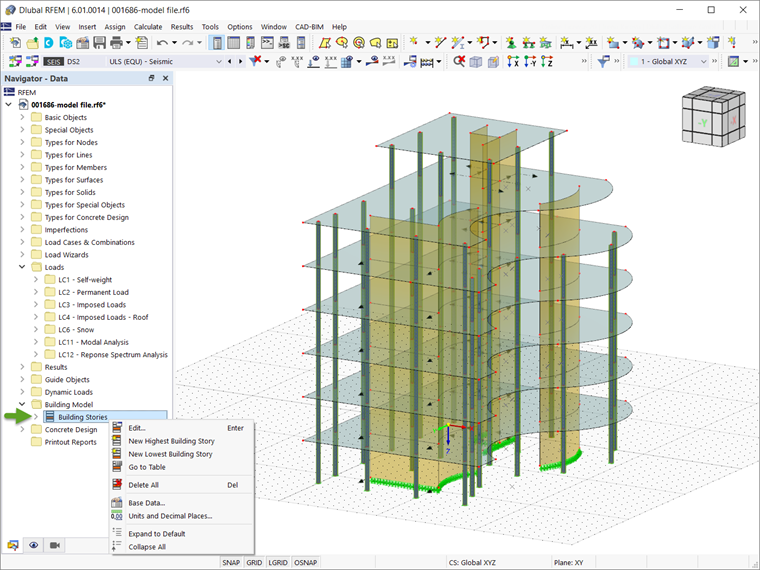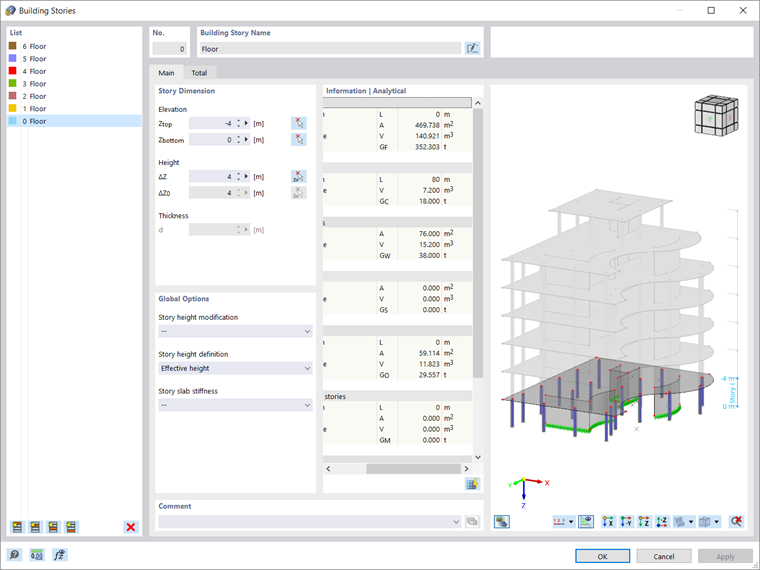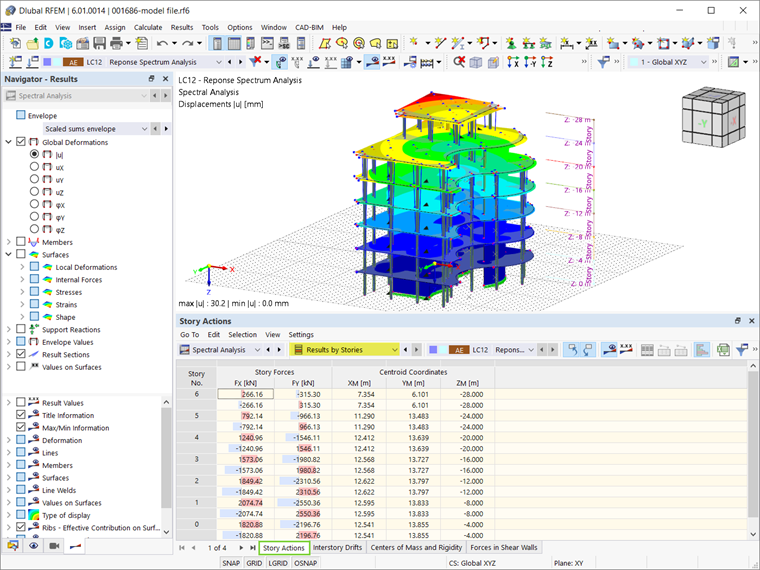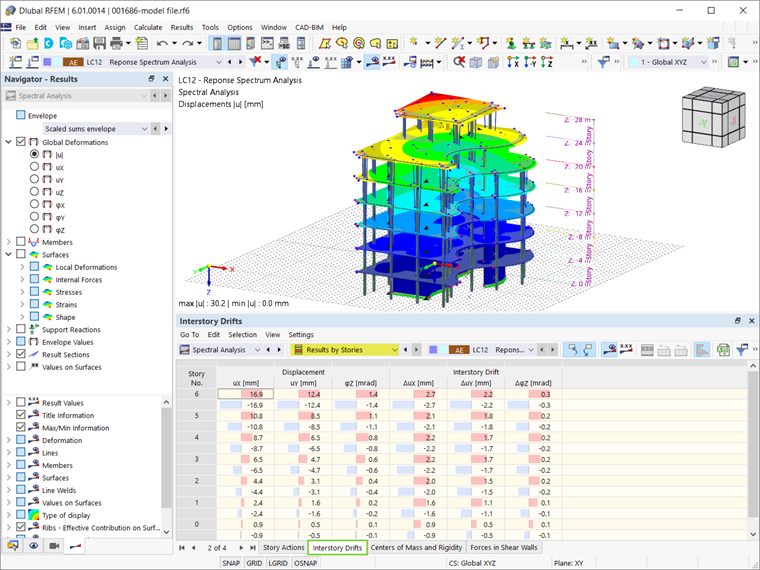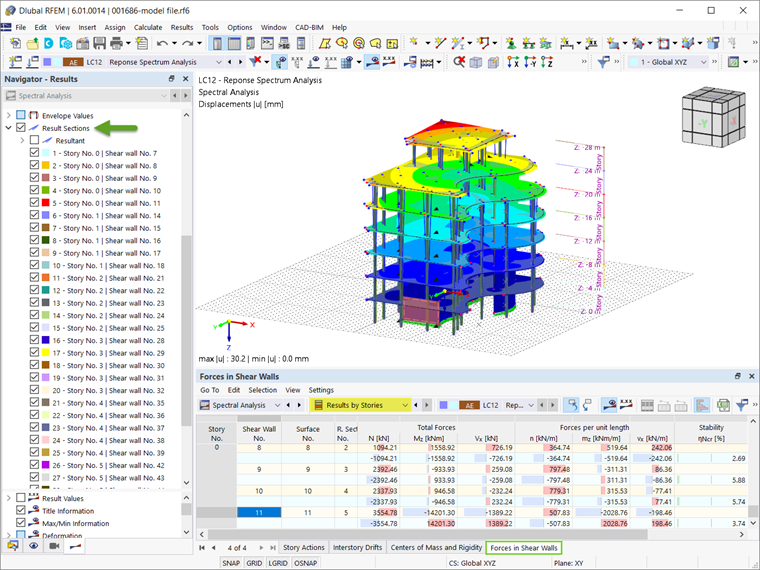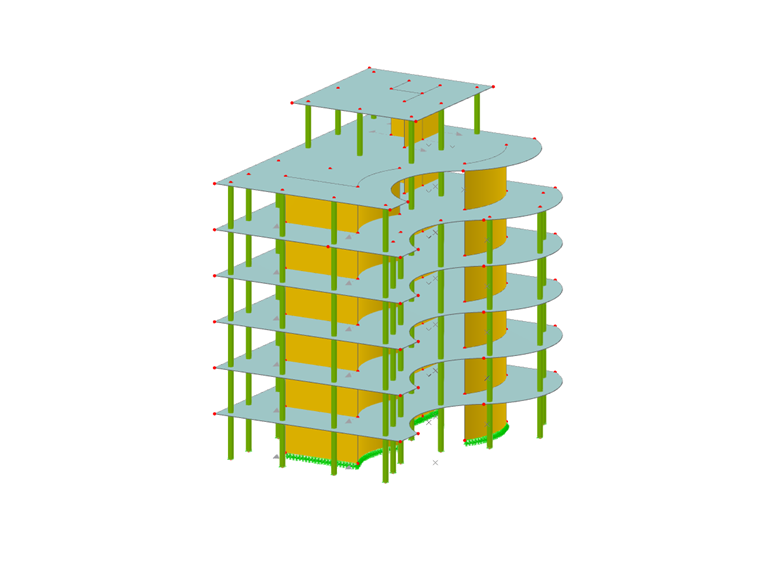The general concept of seismic analysis is based on the creation of a load case for the modal analysis and for the response spectrum analysis. A load case of the modal analysis type is required to obtain the natural vibration values.
This load case is then imported into a response spectrum analysis load case where a response spectrum can be assigned and the modes of interest can be selected. The detailed workflow is discussed in the Knowledge Base article titled “Seismic Analysis in RFEM 6”.
Assuming that the seismic design according to the response spectrum analysis has been performed, RFEM 6 provides the option to use the Building Model add-on to display story actions, interstory drifts, and forces in shear walls. This can be used for further analysis (for example, for the direction of the pushover analysis) or considered in terms of calculation according to the second-order theory.
To do so, it is necessary to activate the Building Model add-on in the Base Data of the model and define the building stories. The example provided in this article is a six-story building (Image 1). The story height is 4 m for each floor. Hence, it is enough to create the first story and copy it 6 times, as shown in Image 2.
Once the building stories have been defined, the spectral analysis results can be displayed by story (Images 3 to 5). First, the story actions obtained from the earthquake calculation can be listed in the table, as shown in Image 3. The centroid coordinates are also displayed. In a similar manner, the interstory drifts are available as shown in Image 4.
When displaying results by story, the program creates result sections for each shear wall on each of the building stories (Image 5). Hence, total forces, as well as forces per unit length, are available in the Results table. These values can be used directly for the shear design of the separate shear walls.
